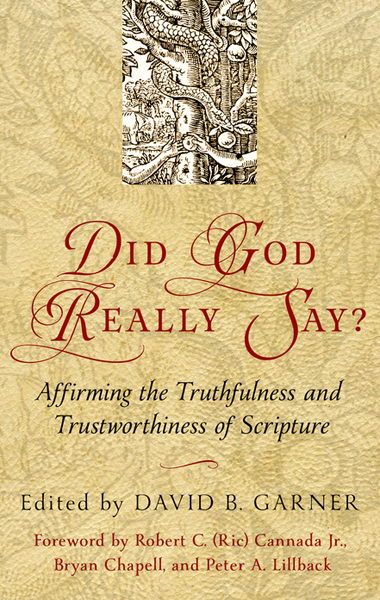
Head of the Church
Jesus is Head of the Church. He is Head of his Church. This we believe. This we confess. And yet how quickly this we dismiss!
Honestly, how significantly does Jesus’ lordship over the Church shape our thinking, our lives, and our priorities? How seriously do we take his throne, his reign, and rule? What weight do we give his kingly session? Does my life align with the priorities Jesus has established in his reign in and over his Church?
Without doubt, some believers eagerly, expectantly, reverently and religiously bow before the King. Faithful saints look with awe to Jesus, falling on their faces as John did before the risen Christ (Revelation 1:17). These attentive saints did so with reverence this past Sunday. They will gather for worship this coming Sunday and worship him again, with their bowed knees making visible their bowed hearts. They know and display Jesus as King—each week without fail (cf. Hebrews 10:24–25). For the faithful under the headship of Christ, daily life draws upon these weekly Lord’s Day commitments.
But such church “freaks” reinforce the rule. Many others have not given sufficient consideration to Jesus’ headship over his Church, and in fact, show little functional significance of his reign. Honoring the Lord’s Day is only one vital facet of such yieldedness.
The Westminster Confession of Faith 25.2 states, “The visible church is . . . the kingdom of the Lord Jesus Christ.” Such confessional insight about the visible Church demands our attention. If Jesus is King of the Church visible, then the local Church occupies center stage for the child of God: your church and my church are where Christ’s reign appears and in particular it functions. Christ’s reign must take proper visible precedence in our lives.
While there are surely more, I offer two reasons we fail to take the headship of Christ as seriously as we ought. One is the sin of dogged pride; the other a sin of sophisticated, false theologizing about the invisible church.
I Am
In the recent movie, “The Avengers: Age of Ultron,” a newly created android, with subtle but inescapable blasphemy, declared, “I am. I am.” The clearly intentional reference illustrates the perverse winsomeness of flippancy about Jesus. Like bubbles blown from a wand, God in Christ bears no gravitas. I gleefully blow Christ off as if he were a weightless bubble.
In step with the seemingly innocuous cinematic reinforcement, I cultivate a winsome disregard for the King of kings and embrace the idolatry of self. I listen to my internal voice rather than God’s Word and tell him, “My word is more important than yours.” Then I choose my own likes rather than his will and tell him, “Not your will be done, but mine.” Priorities, plans, and pursuits that esteem my way first unflinchingly declare, ‘I am god.’ Every sin is a puffed up violation of the first commandment.
And so is the sin of making light of the local church. Perceiving local church life a personal preference, my heart wiggles itself free through convenient yet convincing reasoning. The Church of Jesus Christ finds itself relegated to one of many selections on my priority buffet. Worship and engagement in the local church rest comfortably as an option, and I pick and choose as I wish. Participation in Christ’s local church shifts from obligation and corporate privilege to option and personal sacrifice.
In truth, many consider our attendance at church services a bonus to God and others, not essential to obedience. Sports, vacations, overtime at work—these bubble to the top of our self-inflated hearts. We decide that we will go to morning worship but that evening worship is for those who have nothing better to do on Sunday night. After all, I have given Jesus my Sunday morning. Does he really need a whole day?
I love Jesus and I can do that on my own, thank you very much.
Such an attitude and behavior betray the sordid facts: as lord of my life, I am head of my church. Jesus will have to wait. I am sure he won’t mind.
The Church for whom divine redemption is purposed, for whom he died and rose again, and upon whom he has poured his eternal Spirit? It will get my attention when I decide.
The Visible Church
Mistaken theologizing lodges the second distorted reason. Jesus is Head of the Church, we affirm. But his headship, we often infer, is invisible over his invisible Church—that body of the elect through the ages, known only to God. Yet while God alone knows the elect and this invisible Church “stands, with respect to its members, in an inward and spiritual relationship to Christ,”[1] that fact holds no sway when it comes to my necessary commitment to his Church.
John Murray, among others, has insisted that the visible/invisible church distinction is a false one.[2] I don’t agree, but I surely appreciate what his position protects. The invisibility of the Church can perversely defend my invisibility in the church. If the Church is invisible, so, I argue, can my participation in it be. When I defend my personal faith by insisting that my participation in the visible church is secondary or optional, I introduce a false disconnect between the invisible and visible Church. I fail to honor the Christ I claim, and with such fallacious spiritualization of the Church opportunely vaporize Jesus’ headship.
Yet the invisible Church “necessarily implies an outward and visible society, embracing and encompassing the invisible and spiritual one; in other words, an outward Church, within which the invisible Church of real believers is embosomed, protected, perfected.”[3] The visible hosts and nourishes the invisible. The means of God’s grace come to God’s people in their formal, visible gatherings.
Banished to the Isle of Patmos, the Apostle John received the final Revelation of Jesus Christ—his final word to his people. Note well, that in these last words of revelation, Jesus speaks explicitly to the local churches. To these particular bodies he calls out with words reminiscent of his parables: “He who has an ear, let him hear what the Spirit says to the churches” (Rev. 2:7a 2:11a; 2:17a; 2:29; 3:6; 3:13; 3:22).
Jesus’ presence among the churches suffers no abstraction. His is no generic presence, no conceptual authority, no distant concern! Hardly. The risen, exalted and glorified Christ delivered messages with thunderous authority to his people where they are gathered in his name. His personal presence cannot squeeze into any falsely construed invisible church paradigm.
[12] Then I turned to see the voice that was speaking to me, and on turning I saw seven golden lampstands, [13] and in the midst of the lampstands one like a son of man, clothed with a long robe and with a golden sash around his chest. [14] The hairs of his head were white, like white wool, like snow. His eyes were like a flame of fire, [15] his feet were like burnished bronze, refined in a furnace, and his voice was like the roar of many waters. [16] In his right hand he held seven stars, from his mouth came a sharp two-edged sword, and his face was like the sun shining in full strength. [17] When I saw him, I fell at his feet as though dead. But he laid his right hand on me, saying, “Fear not, I am the first and the last, [18] and the living one. I died, and behold I am alive forevermore, and I have the keys of Death and Hades. (Revelation 1:12-18)
Jesus makes explicit to the Apostle John that his headship over the churches is immediate, real, and vital. Having identified the seven golden lampstands as the seven churches to whom he speaks (Rev. 1:20), the Lord and King deliver his prophetic word as he roves among the seven churches. No wonder John was terrified! This Mighty One actually dwells among his people in their local churches.
Each visible church is the domain of the Son of God’s present authority and ministry. As we await his return, it is in this visible gathering that his reign functions and is on display (cf. Ephesians 1:15–23). By cloaking his kingship in vagary, we defy the dynamic authority and vitality of the local Church King.
To put it positively, the local Church is the place that the people of God enjoy the means of Christ’s present and presenting grace. Feasting on word and sacrament of Christ Jesus, the people of God find their faith strengthened, their souls nourished, and their hope multiplied. As Head of the Church, Jesus walks among the churches and feeds his people there.
To put it negatively, using the invisible/visible church distinction to reinforce a privatized faith corrupts Scripture and lays a direct challenge at Jesus’ own claims. Let us not mince words. Any theology that downplays the local church rebels against the King of kings. Any claim of submission to Jesus’ lordship that defends private faith as biblical faith wreaks havoc with the biblical doctrine of the Church and defies the lordship of Christ. Such contending with the resurrected King warrants harsh rebuke. Entertaining such theological circumnavigation demands repentance.
God’s people must recognize and relish the priority God has given Christ and his church: “[22] And he put all things under his feet and gave him as head over all things to the church, [23] which is his body, the fullness of him who fills all in all.” (Ephesians 1:22-23)
Jesus is not only Head of the Church, he is Head of the churches. He is head of your church. He is head of my church.
[1] James Bannerman, The Church of Christ: A Treatise on the Nature, Powers, Ordinances, Discipline, and Government of the Christian Church (Revised edition; Edinburgh: Banner of Truth, 2015), 32.
[2] John Murray, "The Church: Its Definition in Terms of 'Visible' and 'Invisible' Invalid," in Collected Writings of John Murray (Carlisle, PA: The Banner of Truth Trust, 1976), 1:234.
[3] Bannerman, Church, 32.

The Alliance of Confessing Evangelicals is member supported and operates only by your faithful support. Thank you.
















 © Alliance of Confessing Evangelicals
© Alliance of Confessing Evangelicals


